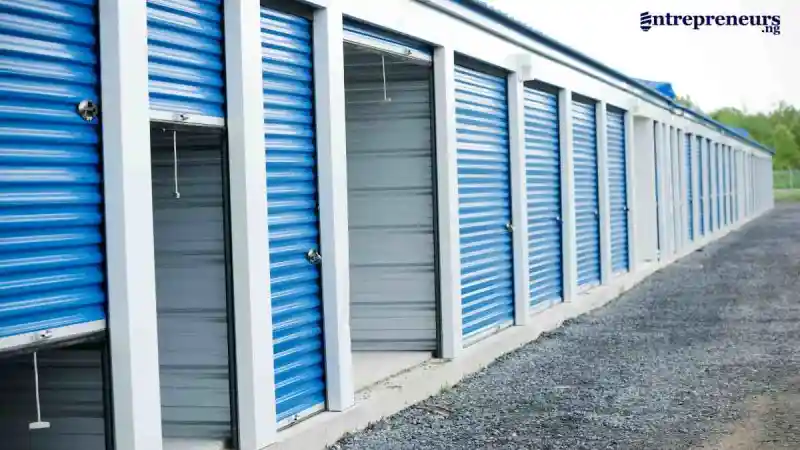In a rapidly evolving real estate landscape, few business models have proven as resilient and scalable as self-storage. Whether you’re a seasoned investor or a first-time developer, understanding the cost to build self storage is a crucial step toward launching a successful and profitable facility. This guide explores the major components of construction costs, the variables that affect your budget, and the smart planning required to transform a blueprint into a thriving business.
Why Self Storage Is a Smart Investment
Self-storage is often considered a “set-it-and-forget-it” investment. With relatively low maintenance, steady demand, and attractive profit margins, it appeals to entrepreneurs looking for stable, long-term income. In 2025, increasing housing density, business downsizing, and lifestyle shifts continue to drive demand across urban, suburban, and even rural markets.
But like any real estate venture, the journey begins with careful planning—and that means understanding your upfront costs.
Average Cost to Build Self Storage in 2025
The cost to build self storage varies widely depending on your location, facility type, and construction approach. On average, new construction ranges from $60 to $100 per square foot in the U.S. This means a standard 40,000–50,000 square foot facility will cost between $2.4 million and $5 million to build.
However, these are general figures. The actual price tag depends on factors like land acquisition, permits, design, and whether you’re building single-story units or climate-controlled multi-level storage.
Major Cost Components
1. Land Acquisition
Before construction can begin, you’ll need a properly zoned parcel of land. Depending on your market:
-
Suburban/Rural areas: $200,000 – $500,000
-
Urban/high-traffic zones: $750,000 – $2 million+
Be sure the property is zoned for commercial storage use or that a zoning variance is possible. Investing in a feasibility study before purchasing land can help prevent costly delays.
2. Site Preparation and Engineering
After land acquisition, the site must be cleared, graded, and prepared for construction. This includes:
-
Soil testing
-
Utility connections (water, power, sewage)
-
Environmental reviews
-
Stormwater systems
Expect to spend $50,000 to $150,000 depending on the condition of the land.
3. Design and Architecture
A well-designed storage facility maximizes rentable space while ensuring functionality and customer convenience. Architects and engineers will help:
-
Optimize the site layout
-
Design unit sizes and placement
-
Plan driveways and parking
-
Ensure ADA compliance
Design fees typically run $75,000 to $200,000, depending on project complexity.
4. Construction Costs
This is the bulk of your budget. Construction costs include:
-
Steel framing and roofing
-
Interior partitions and doors
-
Foundation work
-
Lighting and insulation
-
HVAC for climate-controlled units
A basic non-climate-controlled facility might cost $60–$75 per sq ft, while climate-controlled and multi-story buildings can exceed $100 per sq ft.
Estimated range:
-
40,000 sq ft @ $65 = $2.6 million
-
50,000 sq ft @ $90 = $4.5 million
5. Permits, Fees, and Legal Costs
Your local government will require:
-
Building permits
-
Impact fees
-
Fire safety inspections
-
Environmental compliance
-
Legal review for zoning or use changes
This category may cost $25,000 to $100,000 or more, depending on jurisdiction.
6. Security and Technology
Customers expect modern facilities with:
-
Gated keypad access
-
24/7 video surveillance
-
Motion-activated lighting
-
Smart locks or mobile access
Installation of these systems generally costs $50,000 to $150,000, but they enhance the facility’s value and can support higher rental rates.
7. Marketing and Opening Costs
Before tenants start moving in, you’ll need:
-
A branded website with online booking
-
Local advertising (Google Ads, social media, print)
-
On-site signage
-
Office setup and staff training
Set aside $20,000 to $50,000 to launch and promote your new facility.
Variables That Impact the Cost to Build Self Storage
Several key factors can push your costs higher or lower:
-
Location: Land and labor prices differ dramatically between states and cities.
-
Unit Mix: Offering more small units increases walls and doors, slightly raising costs.
-
Facility Type: Single-story costs less; multi-level increases ROI but is more expensive.
-
Construction Method: Modular or prefab construction can reduce build time and labor costs.
-
Phasing: Building in phases can lower upfront costs while reducing financial risk.
ROI Expectations and Long-Term Outlook
Most self-storage developments reach break-even occupancy (60–70%) within 18–24 months. A stabilized facility can deliver 8–12% annual ROI, especially if well-located and well-managed.
To boost returns:
-
Offer autopay and online rentals
-
Upsell climate-controlled or premium access units
-
Add retail sales (locks, boxes, insurance)
-
Use smart software for marketing and operations
Final Thoughts
If you’re serious about entering the storage industry, understanding the cost to build self storage is step one. With a solid plan, expert partners, and realistic budgeting, you can bring your project from blueprint to business—efficiently and profitably.
Self-storage offers a unique blend of low risk, scalable returns, and long-term stability. Whether you start small or go big, the key is to plan smart, build right, and stay ahead of evolving customer expectations.

